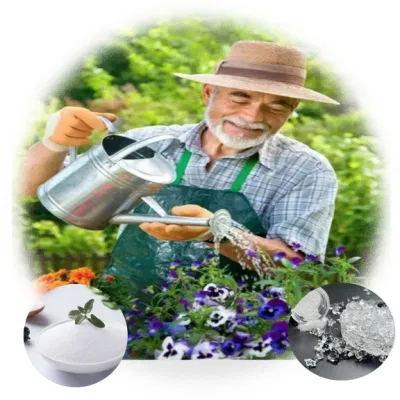Water-absorbing materials are indispensable in various aspects of life and production. Apart from common materials like toilet paper, sponge, and cotton, there are other absorbent materials worth mentioning. This article aims to provide a comprehensive overview of water-absorbent materials and their products.

Superabsorbent Polymer
Superabsorbent Polymer (SAP), particularly sodium polyacrylate, stands out as one of the most potent water-absorbing substances.
Water Absorption: Under ideal conditions, it can absorb thousands of times its own weight in water.
Absorption Speed: The water absorption process occurs instantly.
Moisture Retention: It effectively locks in absorbed moisture, preventing leakage even under pressure.
Types of Absorbent Materials
Physical Water Absorption: This method, akin to a molecular sieve, relies on cavities to adsorb water. However, it struggles to effectively retain water after absorption. Materials include cotton, toilet paper, sponge, and activated carbon.
Chemical Water Absorption: Chemical absorbent materials undergo reactions with water to absorb it rapidly. However, they typically cannot be reused after absorption. Examples include calcium oxide, anhydrous calcium chloride, and soda-lime.
Polymer Absorbent Material: Polymer absorbent materials combine physical and chemical methods to absorb water. They achieve this through a high concentration of hydrophilic groups and molecular sieves, allowing repeated water absorption. Examples include polyvinyl alcohol, sodium polyacrylate, and potassium polyacrylate.
Top 4 Water Absorbent Materials
1. Sodium Polyacrylate

Sodium polyacrylate, a functional polymer material, can absorb water up to several hundred times its weight. Its advantages include:
High Absorption: It can absorb hundreds to thousands of times its weight in water.
Adjustable Absorption Speed: Production processes can control the absorption speed for specific purposes.
Non-Toxic and Biodegradable: It does not produce heat or toxic substances during water absorption and can decompose naturally.
2. Potassium Polyacrylate

Potassium polyacrylate boasts a water absorption rate of over 500% of its weight. Its key features include:
High Absorption Capacity: It can retain large amounts of water, aiding soil moisture levels.
Moisture Retention: Once absorbed, it effectively retains moisture, forming a gel-like substance.
Versatile Applications: Used in agriculture, personal care products, food packaging, medical applications, and construction.
3. Anhydrous Calcium Chloride
With a water absorption rate exceeding 300% of its weight, anhydrous calcium chloride is widely utilized in various applications, including desiccation and dehumidification.
4. Calcium Oxide
Calcium oxide, with a water absorption rate of about 35% of its weight, is formed through the thermal decomposition of calcium carbonate-containing materials. It is highly effective in desiccation processes.
These top water-absorbing materials serve diverse purposes across industries, showcasing their significance in moisture management and product development.

